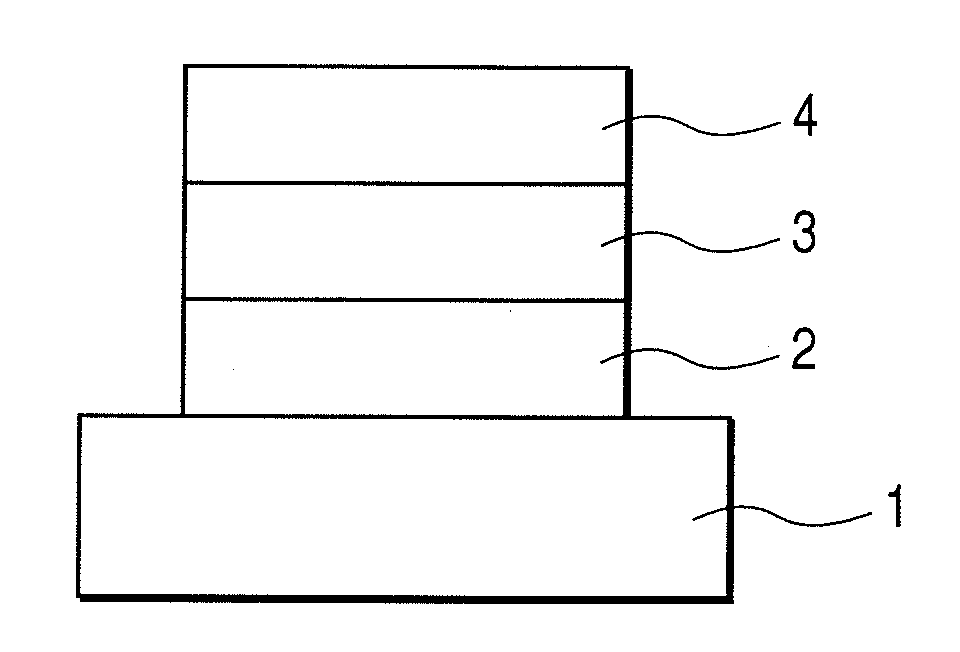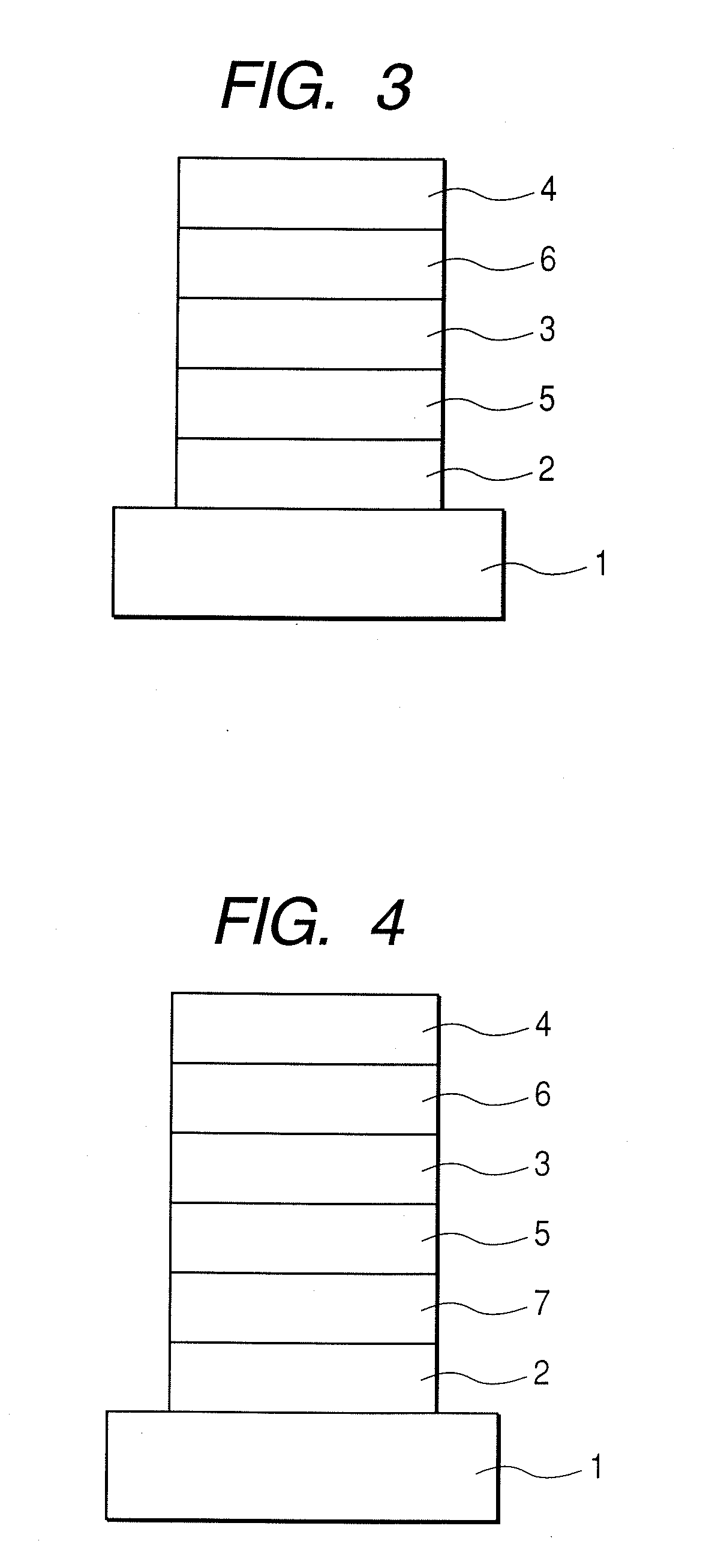Pyrene compound and organic light emitting device
- Summary
- Abstract
- Description
- Claims
- Application Information
AI Technical Summary
Benefits of technology
Problems solved by technology
Method used
Image
Examples
synthesis example 1
Synthesis of Exemplified Compound No. 1
[0093]
[0094]1.0 g (1.59 mmol) of the tetrabromo intermediate (3), 3.0 g (12.7 mmol) of pinacolborane (4), 200 ml of toluene, and 70 ml of ethanol were loaded into a 500-ml three-necked flask. An aqueous solution of 12.8 g of sodium carbonate in 64 ml of water was dropped to the mixture while the mixture was stirred in a nitrogen atmosphere at room temperature. Next, 0.37 g (0.32 mmol) of tetrakis(triphenylphosphine)palladium(0) was added to the mixture. After the mixture had been stirred at room temperature for 30 minutes, the temperature of the mixture was increased to 77° C., and the mixture was stirred for 5 hours. After the reaction, an organic layer was extracted with chloroform, dried with anhydrous sodium sulfate, and purified with a silica gel column (mixed developing solvent of hexane and toluene), whereby 0.79 g of Exemplified Compound No. 1 (white crystal) was obtained (46% yield).
synthesis example 2
Synthesis of Exemplified Compound No. 7
[0095]
[0096]1.0 g (1.59 mmol) of the tetrabromo intermediate (3), 4.7 g (12.7 mmol) of pinacolborane (5), 200 ml of toluene, and 70 ml of ethanol were loaded into a 500-ml three-necked flask. An aqueous solution of 12.8 g of sodium carbonate in 64 ml of water was dropped to the mixture while the mixture was stirred in a nitrogen atmosphere at room temperature. Next, 0.37 g (0.32 mmol) of tetrakis(triphenylphosphine)palladium(0) was added to the mixture. After the mixture had been stirred at room temperature for 30 minutes, the temperature of the mixture was increased to 77° C., and the mixture was stirred for 5 hours. After the reaction, an organic layer was extracted with chloroform, dried with anhydrous sodium sulfate, and purified with a silica gel column (mixed developing solvent of hexane and toluene), whereby 0.74 g of Exemplified Compound No. 7 (white crystal) was obtained (36% yield).
synthesis example 3
Synthesis of Exemplified Compound No. 17
[0097]
[0098]1.0 g (1.59 mmol) of the tetrabromo intermediate (3), 4.9 g (12.7 mmol) of pinacolborane (6), 200 ml of toluene, and 70 ml of ethanol were loaded into a 500-ml three-necked flask. An aqueous solution of 12.8 g of sodium carbonate in 64 ml of water was dropped to the mixture while the mixture was stirred in a nitrogen atmosphere at room temperature. Next, 0.37 g (0.32 mmol) of tetrakis(triphenylphosphine)palladium(0) was added to the mixture. After the mixture had been stirred at room temperature for 30 minutes, the temperature of the mixture was increased to 77° C., and the mixture was stirred for 5 hours. After the reaction, an organic layer was extracted with chloroform, dried with anhydrous sodium sulfate, and purified with a silica gel column (mixed developing solvent of hexane and toluene), whereby 1.2 g of Exemplified Compound No. 17 (white crystal) was obtained (55% yield).
PUM
| Property | Measurement | Unit |
|---|---|---|
| Electric potential / voltage | aaaaa | aaaaa |
Abstract
Description
Claims
Application Information
 Login to View More
Login to View More - R&D
- Intellectual Property
- Life Sciences
- Materials
- Tech Scout
- Unparalleled Data Quality
- Higher Quality Content
- 60% Fewer Hallucinations
Browse by: Latest US Patents, China's latest patents, Technical Efficacy Thesaurus, Application Domain, Technology Topic, Popular Technical Reports.
© 2025 PatSnap. All rights reserved.Legal|Privacy policy|Modern Slavery Act Transparency Statement|Sitemap|About US| Contact US: help@patsnap.com



